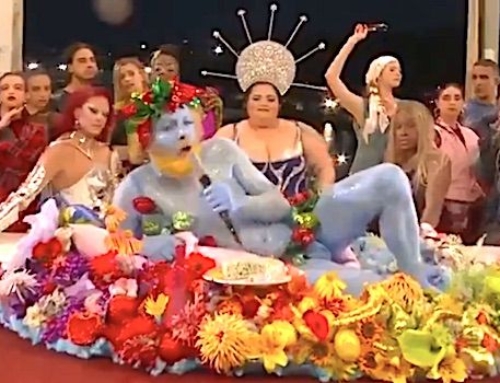
In 1924, the world witnessed the Olympics in Paris, with athletes from 44 nations competing in 126 events across 17 sports. It was a remarkable reminder of the power of sports to transcend political strife and bring unity.
Less than five years before, the First World War had come to an end, leaving a profound sense of horror at the new age of warfare, with unprecedented loss of life. France, the host of the Olympics, had lost a staggering 1.4 million men in battle. Great Britain had lost 880,000 men, and the United States, a late entrant to the fighting, had lost nearly 120,000 men. It was a war like none before it.
Some of the war’s most horrifying battles had taken place just a few years before on France’s own ground. The Battle of the Somme, the Battle of Verdun, the Battle of the Marne are just a few of the battles we still remember today as being some of the deadliest in all of history.
In 1924, the Olympics games that summer were a way of re-establishing norms in post-war Europe. Wars expose the destructiveness of human nature, and the worst of what human beings can do to each other. The Olympics, by contrast, have always been a way of showcasing the other side of human capabilities.
Fast forward one hundred years to today, and the 2024 Olympics are again in Paris. The world is no less broken than it was in 1924, and no less in need of unity. Which is why it’s all the more perplexing that the Olympic organizers in Paris chose to use the Olympics opening ceremony not to showcase the human capacity to rise to the occasion, but the human capacity to descend into base moral behaviors.
The opening ceremony’s feature performance was titled “La Cène sur la Scène sur la Seine.” A clever title, since all three words (cène, scène, and Seine) are pronounced the same, it translates, literally, as “The Last Supper on a Stage on the Seine.”
A recreation of Leonardo da Vinci’s famous “The Last Supper” painting, the scene made a mockery of the Last Supper, with a female Jesus figure (a noted LBGTQ star in Europe), flanked by drag queens in scandalous clothing. For Christians everywhere, it was a revolting sight, with overt sexual symbols for children to see on their television screens.
When the outcry came from the Christian community, the artistic organizers responded dismissively that Christians had simply misunderstood their art. The scene came about, in the words of Thomas Jolly, the artistic director of the ceremony, because “the idea was to depict a big pagan celebration, linked to the gods of Olympus, and thus the Olympics.”
Nice try. But a depiction of a “big pagan celebration” would not, by definition be based on the least pagan meal in all of human history – the meal before Jesus was crucified.
Jolly also offered another excuse. The scene, he said, was meant to celebrate diversity and pay tribute to French gastronomy. French gastronomy? As if Jesus had served quiche or confit de canard at the last meal with his disciples?
In fact, the Last Supper, which Jesus served to his 12 disciples, was the traditional Passover meal, with every item on the table serving as an important reminder of Biblical truths. The Passover meal is highly symbolic of the past, and it remains as much so today as it was when Jesus served it.
The meal consists of rituals and food intended to represent the history of God’s deliverance of the Israelites from slavery in Egypt to the Promised Land. The celery or other leafy green vegetable dipped in salt water symbolizes their tears. The paste of fruits and nuts symbolizes the mortar (the labor of the Israelites when they were held in bondage).
Remembering God’s deliverance was more than a way of connecting with family history; it was an act of obedience. Deuteronomy 6:12 instructs us not to forget what God did in His deliverance. “Be careful that you do not forget the LORD, who brought you out of Egypt, out of the land of slavery.”
The Passover meal remains a way of never forgetting what the Lord had done for the Israelites.
But on top of the symbolism of the past in the Passover Meal, Jesus infused the Last Supper with new symbolism. Jesus gave thanks for the bread, then broke it, and passed it to his disciples with this note of symbolism. “This is my body, which is given for you. Do this in remembrance of me.” The Last Supper brought together the reminders of God’s deliverance to the Israelites out of slavery, with the new symbolism for Christians that Jesus’ death on the cross was deliverance from the bondage of sin.
The Olympic ceremony’s organizers used one of the most symbolic of all Christian traditions to impose today’s woke ideology. The symbolic message from the woke organizers is clear: Nothing is sacred, and nothing is off limits in the crusade to spread radical gender ideology.
Unlike the unity displayed at the 1924 Olympics in Paris, this year’s Paris Olympics organizers gratuitously inserted divisiveness and political strife – for the sport of mocking Jesus and all Christians. Conservatives around the world should take note.
Jenny Beth Martin is Honorary Chairman of Tea Party Patriots Action.
Subscribe Below To Our Weekly Newsletter of our Latest Videos and Receive a Discount Code For A FREE eBook from our eBook store:





